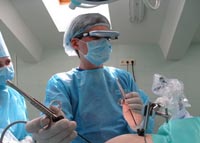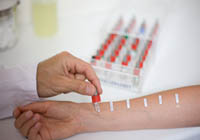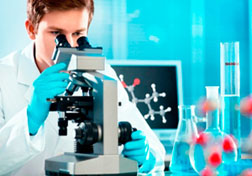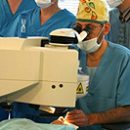The doctor offers you a laparoscopic operation. But what is it and how it passes? Answer you will find here.
Content
The huge area of surgery is called endoscopy. The main difference from classical surgery is that the operation does not require cuts. Operational interference on the abdominal organs and small pelvis is called laparoscopy. It is performed through 3-4 point punctures in the front abdominal wall. Through one of them, located in the navel area, a thin telescope is introduced, due to which the image through a digital mini-chamber is transmitted to the monitor, on which everything that happens inside the abdominal cavity. Thin manipulators are injected through other punctuations, which look like a 40 cm long tube and a diameter of 5 mm, from one end of which - a comfortable functional handle for a surgeon, and on the other - miniature tongs, or scissors, or other electrical or laser tool.
The advantages of laparoscopy before the extension operation manifested quite quickly after the start of applying this new type of surgery. One of the most important is the absence of the front abdominal wall, which hurts and heals after surgery, because of what a woman is forced to stay in the hospital 10-15 days. Already 2-3 hours after laparoscopy, the patient begins to get up. Typically, in the evening or morning of the next day, the state already allows you to return to normal physical activity, and after 2-3 days it will return to work. Traces on the skin from punctures heal fast enough and after a few months they can be found only if you know where they were.
In addition, laparoscopy technology, in which the image from the abdominal cavity is displayed on the monitor screen, allows you to consider the smallest pathology that is not visible in the classical operation. This is possible due to the fact that on the monitor you can increase the image of the organs up to 10 times, which allows not only to see the foci of pathology, but also to remove them the most delicate and gentle, without affecting healthy fabrics.
Stages of laparoscopic operation
 Laparoscopy is carried out on a well-spent and strictly observed scheme. Despite the external differences from the classical strip operation, the laparoscopy is the same surgery performed on all classic canons of surgery and, accordingly, all the requirements and standards of surgery.
Laparoscopy is carried out on a well-spent and strictly observed scheme. Despite the external differences from the classical strip operation, the laparoscopy is the same surgery performed on all classic canons of surgery and, accordingly, all the requirements and standards of surgery.
After the patient falls under the action of anesthesia, and the anesthesiologist will give permission to start the operation, proceed to the first stage - «Overlaying pneumoperitoneum». This means that carbon dioxide is injected into the abdominal cavity through a thin special stripe needle (needle of the vele). Carbon dioxide was chosen specifically, as it is absolutely safe. Gas is supplied until its pressure in the abdominal cavity will reach 14-15 mm.RT.Art. The pressure is determined by the same sensible device that gas supplies and is called the endophlatrator. This device works all the time operation and constantly pumps the gas to the pressure on the same level. This gas is necessary, as it presses the internal organs, protecting them from injury, and lifts the front abdominal wall than the space for work is created.
After this stage, a trocar for an optical tool is introduced - a telescope called Laparoscope. Laparoscope is introduced through a puncture in the bottom of the navel. Consistently examine the abdominal cavity, including liver and diaphragm. After that, inspect where it is better to enter trocars for manipulators. Polls for manipulators are made along the growth line of pubic hair, one to the right of the midline, the other - on the left.
After the introduction of workers manipulators examine women's internal organs strictly according to the exhaust scheme - clockwise: Starting from the anteropoly space - Right appendages - Posadiginal space - left appendages. This marks all types of pathologies. After that, proceed to the detection of the pathology.
Despite the efficiency and delicacy of exposure to laparoscopy - a full surgery that may be accompanied by complications. Complications can be divided into complications from anesthesia, infectious and directly surgical. Surgical complications include subcutaneous emphysema and worsening and intestines. The subcutaneous emphysema occurs when gas in the subcutaneous fat tissue, passes in 1-2 days. Wounds of vessels or intestines when entering trocars or during surgery - requires a wounded of a wounded organ.









